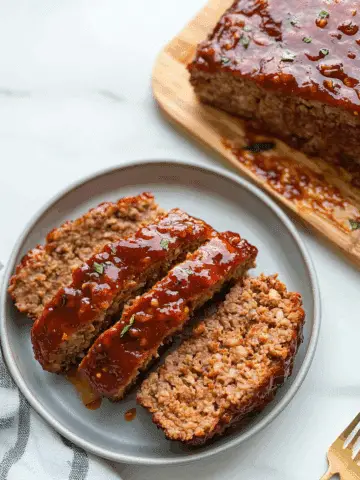There's something magical about the crackle of freshly baked sourdough bread cooling on your countertop. The crisp, golden crust gives way to a chewy, tender crumb with just the right amount of tang—a sensory experience that transforms even the simplest slice into a moment of comfort.

My journey with sourdough began during a quiet winter weekend when I decided to finally tackle the mysterious world of wild yeast. What started as a curious experiment quickly turned into a weekly ritual, and now there's always a loaf resting on the counter or tucked in the freezer, ready to accompany any meal.
If you’ve been wanting to try baking with sourdough, this recipe is the perfect place to start. It’s beginner-friendly, requires just a few ingredients, and the hands-on time is surprisingly minimal. Let’s dive into what makes this homemade sourdough so special.
Why You'll Love This Homemade Sourdough Bread
This isn’t just another bread recipe—it’s the gateway to becoming the kind of person who casually says, "I bake my own bread." And yes, it really is as satisfying as it sounds.
First off, the ingredients are simple. All you need is flour, water, salt, and an active sourdough starter. No commercial yeast, no fancy additives—just natural fermentation doing its thing.
It’s surprisingly hands-off. While the dough needs time to ferment and rest, your actual work time is minimal. Most of the magic happens while you go about your day.
The flavor is unmatched. The naturally leavened dough develops complex notes you simply can’t get from store-bought bread. Slightly tangy, deeply wheaty, and incredibly satisfying.
It’s endlessly customizable. Once you’ve mastered the basic loaf, you can experiment with mix-ins like olives, herbs, seeds, or dried fruit. The possibilities are as endless as your creativity.
Ready to roll up your sleeves and get started? Let’s take a look at the ingredients that bring this loaf to life.
Ingredients Notes

At its core, sourdough bread relies on a handful of humble ingredients. But don’t let the simplicity fool you—each one plays a vital role in building flavor and structure.
All-purpose flour forms the base of this loaf. It provides the right balance of protein for gluten development while keeping the crumb tender. You can also experiment with a blend of whole wheat for added depth and nutrition.
Filtered water is essential to maintain a healthy environment for your sourdough starter. Chlorinated tap water can inhibit fermentation, so stick to filtered or dechlorinated water if possible.
Sea salt not only enhances flavor but also strengthens the gluten network. A fine sea salt dissolves easily into the dough, making it a great choice for bread baking.
Sourdough starter is the engine behind the rise. An active, bubbly starter is crucial—make sure it’s been recently fed and is at its peak when you begin mixing your dough.
You’ll also need a few tools: a kitchen scale for accuracy, a large mixing bowl, a Dutch oven for baking, and ideally a proofing basket (banneton) to help shape the dough. A lame or sharp knife is helpful for scoring.
How To Make This Homemade Sourdough Bread

Baking sourdough might seem intimidating at first, but once you get the rhythm down, it becomes a deeply meditative and rewarding process.
Start by feeding your sourdough starter 4-6 hours before you plan to mix your dough. It should be bubbly, active, and doubled in size. This ensures it’s strong enough to leaven the bread.
In a large bowl, combine your flour and water and let it rest for 30-45 minutes in a process called autolyse. This hydrates the flour and kickstarts gluten development. After this rest, add your salt and sourdough starter, mixing until fully incorporated. The dough will be shaggy but sticky.
Begin your stretch and fold routine. Every 30 minutes over the next 2 hours, gently pull and fold the dough over itself four times, rotating the bowl as you go. This strengthens the dough without kneading. You should notice it becoming smoother and more elastic.
Once the bulk fermentation is complete (typically 4-6 hours at room temperature), transfer the dough onto a lightly floured surface. Perform a gentle preshape and let it rest for 20 minutes. Then, shape the dough into a tight ball and place it seam-side up into a floured proofing basket.
Cover and place in the fridge overnight (or up to 18 hours) for the cold retard. This long, slow fermentation deepens the flavor and improves the crust.
The next day, preheat your oven to 475°F with a Dutch oven inside. When ready, gently turn your dough out onto parchment, score it with a sharp blade, and carefully transfer it to the hot Dutch oven. Bake covered for 20 minutes, then uncover and continue for another 20-25 minutes until deep golden brown.
Let the bread cool completely before slicing. The crust will sing as it cools, and the crumb needs time to set for best texture.
Total hands-on time is just about 30 minutes, spread out over 24 hours—and the result is a loaf that’s as beautiful as it is delicious.
Storage Options
Freshly baked sourdough is best enjoyed the day it’s made, but it also stores beautifully with the right care.
To keep your loaf fresh for up to 3 days, store it cut-side down on a wooden cutting board and cover it with a clean kitchen towel. This helps preserve the crust while keeping the interior moist.
For longer storage, slice the bread and freeze individual pieces in a freezer-safe bag. You can pull out a slice whenever the craving hits—it toasts beautifully straight from the freezer.
Avoid storing sourdough in plastic bags at room temperature, as this traps moisture and leads to a soft or rubbery crust.
To reheat, warm slices in a toaster or place the whole loaf in a 350°F oven for about 10 minutes to refresh the crust.
Variations and Substitutions
One of the joys of sourdough baking is how adaptable it is. Once you’ve got the basics down, feel free to get creative.
Want to add more nutrition and a hearty flavor? Try substituting up to 25% of the flour with whole wheat flour or rye flour. These flours add complexity and ferment beautifully.
For a nutty crunch, mix in a handful of sunflower seeds, pumpkin seeds, or chopped walnuts during your final stretch and fold. Be sure they’re evenly distributed to avoid pockets.
A favorite variation in our house includes roasted garlic and rosemary. Add roasted garlic cloves and finely chopped fresh rosemary before shaping the dough. The aroma alone is worth it.
If you’re gluten-sensitive but not celiac, experiment with spelt flour or einkorn for a more digestible loaf. Note that these may ferment faster and require shorter proofing times.
Don’t be afraid to try seasonal flavors too—cranberry-orange in the winter or fresh basil and sun-dried tomato in summer. Sourdough is the perfect canvas for your culinary creativity.
Once you bake your first loaf, you’ll wonder how you ever lived without it. Happy baking!
PrintHomemade Sourdough Bread Recipe
This homemade sourdough bread recipe uses natural fermentation for a crusty, tangy loaf. With simple ingredients and detailed instructions, it's perfect for beginners and artisan bakers alike. Keywords: sourdough, homemade bread, easy artisan recipe.
- Prep Time: 1 hour (plus overnight proof)
- Cook Time: 45 minutes
- Total Time: 13 hours
- Yield: 1 loaf 1x
- Category: Bread
- Method: Baking
- Cuisine: American
- Diet: Vegetarian
Ingredients
-
1 cup (240g) active sourdough starter
-
1 ½ cups (360ml) warm water
-
4 cups (500g) bread flour
-
2 tsp salt
Instructions
-
In a large bowl, mix starter and warm water until dissolved.
-
Add flour and mix until a shaggy dough forms. Let rest for 30 minutes (autolyse).
-
Add salt and knead until incorporated.
-
Bulk ferment for 4-6 hours, doing stretch and folds every 30 minutes for the first 2 hours.
-
Shape the dough and place in a floured banneton or bowl. Cover and cold proof in fridge 8–12 hours.
-
Preheat oven to 475°F (245°C) with Dutch oven inside.
-
Score the dough and bake covered for 20 minutes, then uncovered for 25 minutes.
-
Cool completely before slicing.
Notes
-
For best results, use a well-fed active sourdough starter.
-
Proofing time may vary based on room temperature.
-
You can substitute part of the bread flour with whole wheat for a more rustic loaf.
Nutrition
- Serving Size: 1 slice
- Calories: 180
- Sugar: 0g
- Sodium: 320mg






Leave a Reply